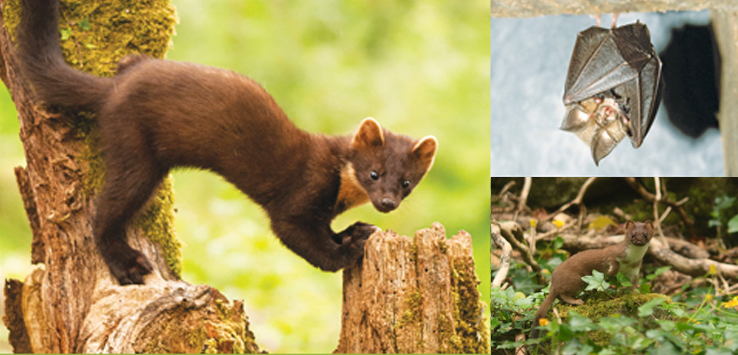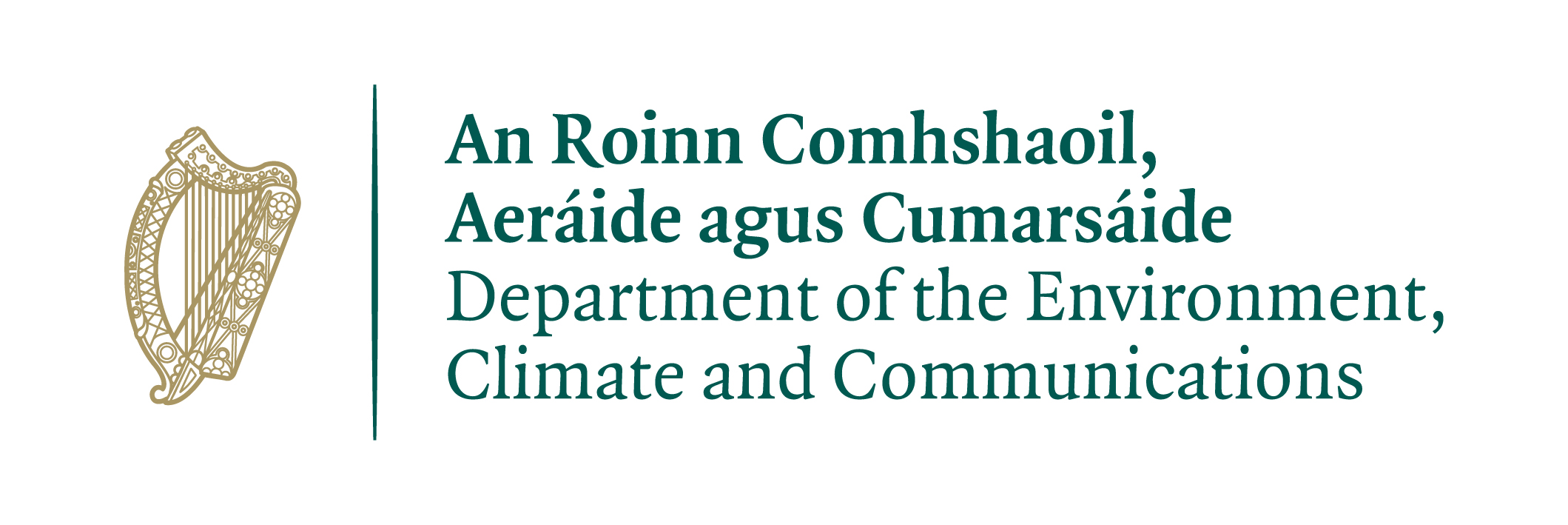News | Blog | And it’s ‘Goodbye’ from Lizzie Croose…
1st March 2023But we couldn’t let her go without one final blog…
What are your first memories of joining VWT?
When I joined the Trust, VWT was embarking on a new project to search for evidence of any remaining pine marten populations in England and Wales. I cut my teeth looking for pine marten scats in forests in Wales and northern England, mostly without success! Fast forward to today and we now have recovering populations of pine martens in Wales and several areas of England – an amazing change in a relatively short amount of time.
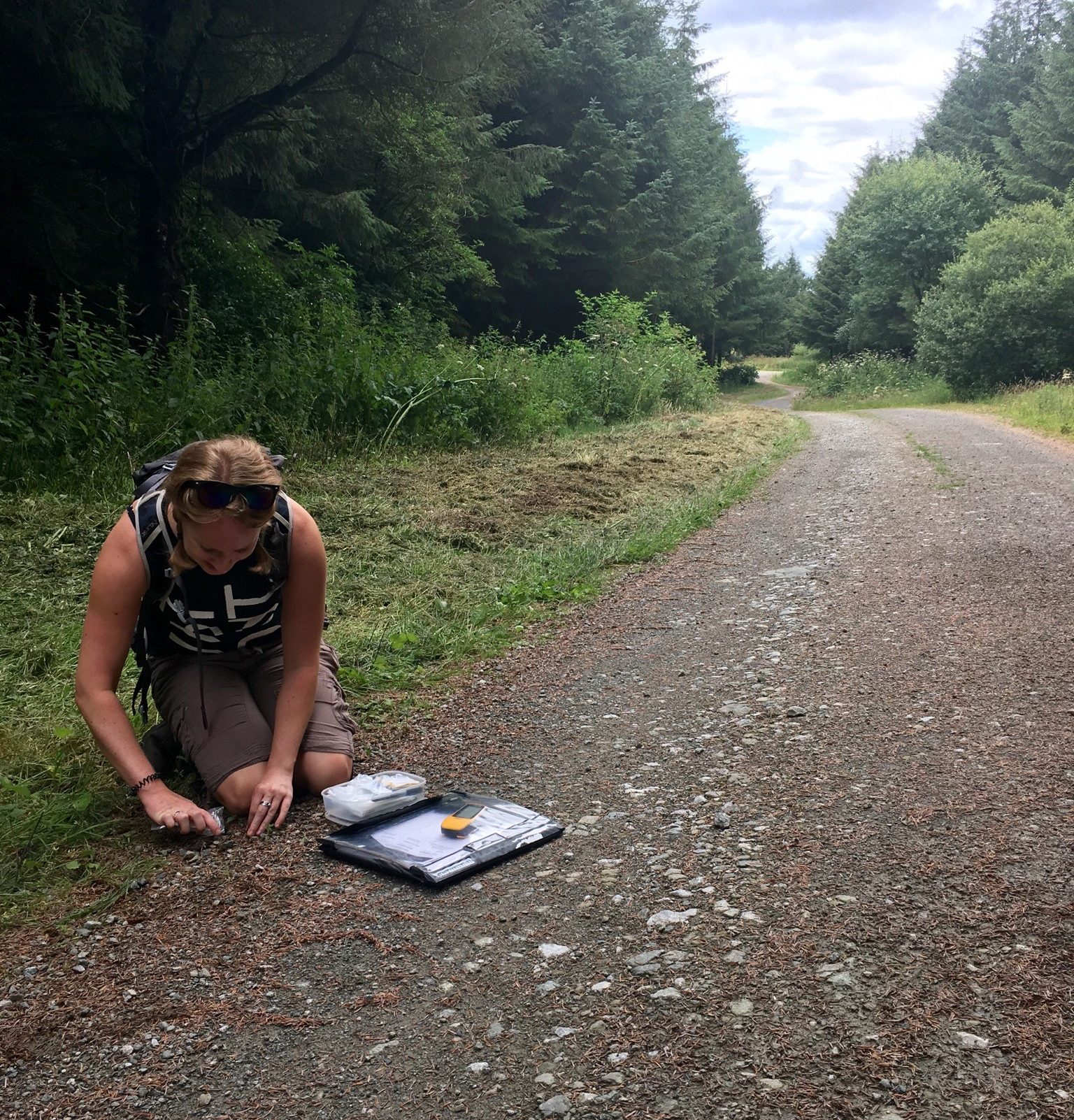
Collecting pine marten scats
What has been your favourite VWT project to work on?
Working on VWT’s Pine Marten Recovery Project, which resulted in the successful translocation and re-establishment of pine martens in Wales, was a definite highlight. It’s been so rewarding to see the success of the project and to be part of a real conservation success story – in no small part thanks to the meticulous planning and hard work by the project team led by VWT’s Jenny MacPherson. I’ve also really enjoyed working on some of our more neglected mustelids – for example, trialling different methods to try to understand how we can monitor weasels and stoats, and tracking the recovery of polecats in Britain.
What have been your top fieldwork moments?
I’ve been lucky to spend a lot of time in the Scottish Highlands, surveying forests and catching pine martens for translocation to mid Wales and then to the Forest of Dean. This involved carrying out fieldwork in beautiful forests and having some memorable encounters with the local wildlife…with pine martens being an obvious highlight! The day that we caught and translocated the very first martens to Wales was a really special moment for all of us.
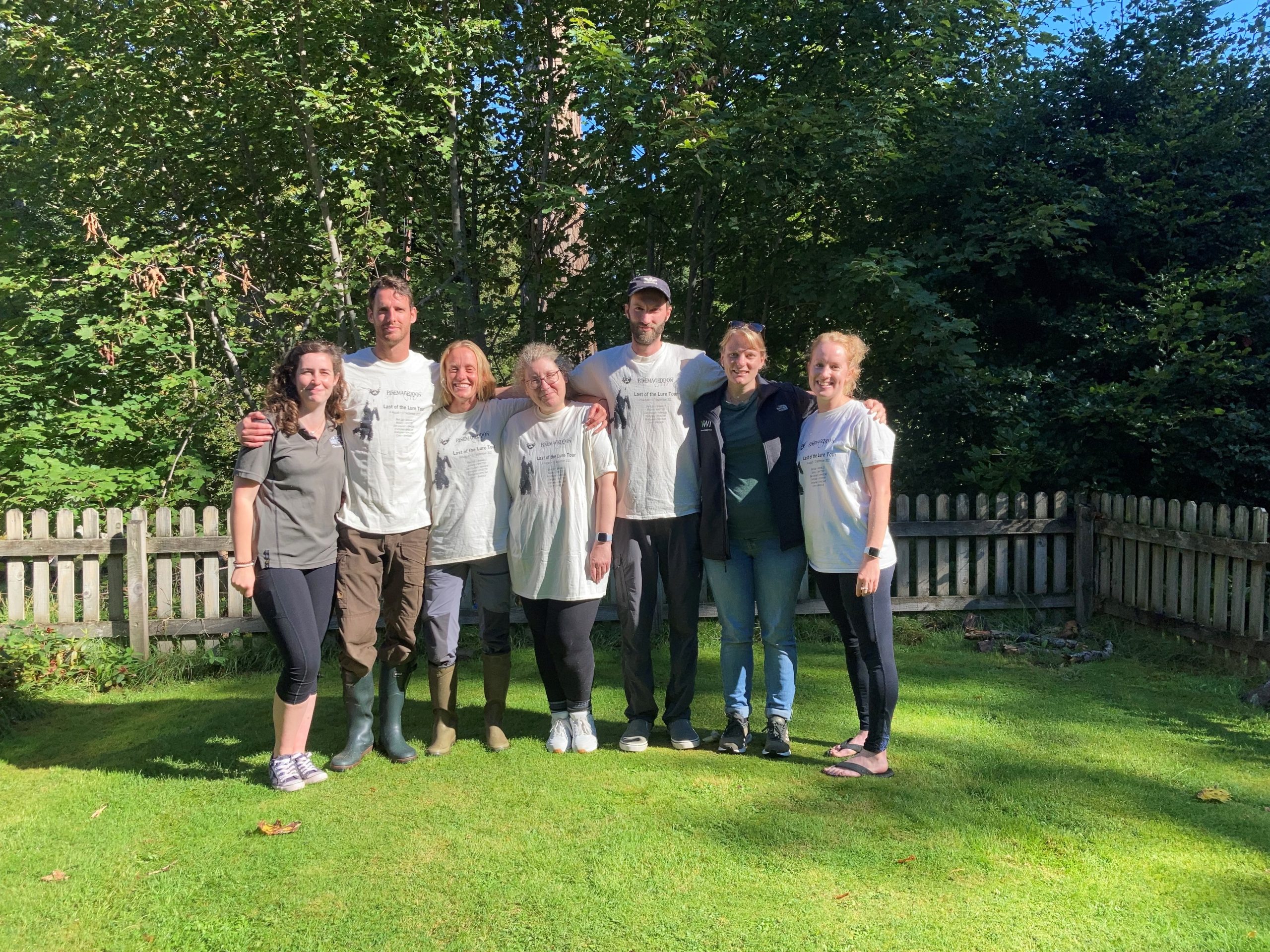
The pine marten team for the Forest of Dean translocations
I also have great memories of catching and radio-collaring polecats in Herefordshire as part of a PhD study with Katie Sainsbury at the University of Exeter. The polecats weren’t a very obliging study species and managed to shed their radio collars in a short space of time, some of which we had to dig out of burrows several feet underground!
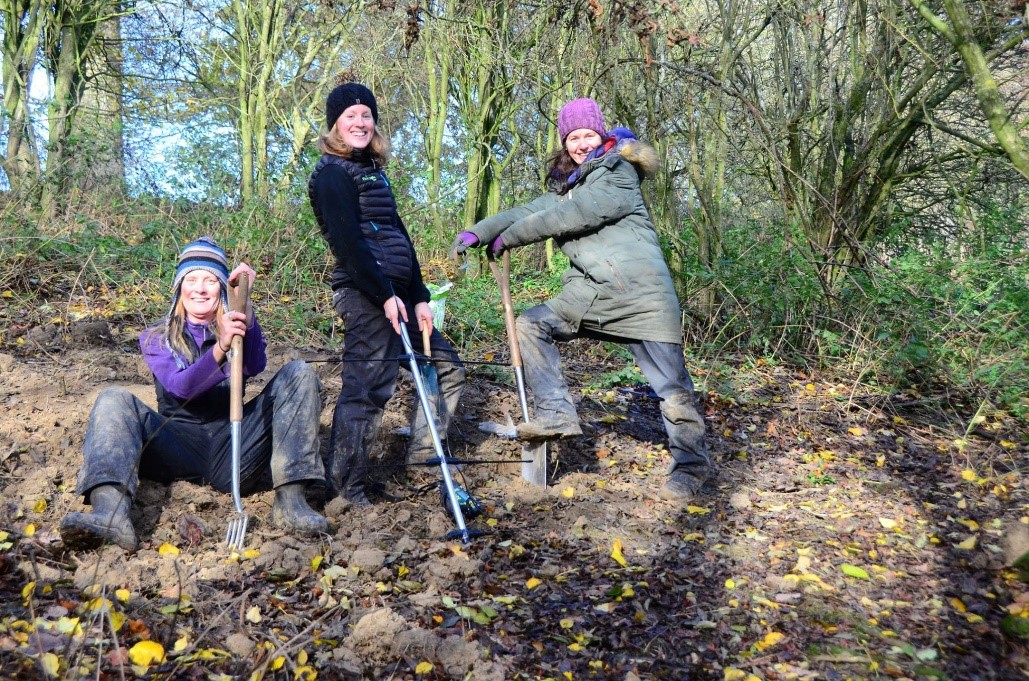
Retrieving a radio collar shed by a polecat deep in a burrow
What piece of work or outcome have you been most proud of?
I’m really proud of the work we’ve done in organising and developing the European Mustelid Colloquium. VWT took on the role of secretariat and main organisers of the Colloquium in 2017 when attendance at the Colloquium had been waning. Since then, VWT has worked with partners to raise the profile and host the Colloquium, and to date we have organised three Colloquiums – in Lyon (with The University Claude Bernard Lyon1-CNRS and Office National de la Chasse et de la Faune Sauvage), Lisbon (with the University of Lisbon) and online. During this time, the Colloquium has gone from strength to strength, and is now attended by more than 100 people from across Europe…and beyond. It has helped to foster a community of mustelid enthusiasts and researchers across Europe, is a great networking opportunity and it’s really rewarding to know that many partnerships and research collaborations have been initiated at the Colloquium (often over a few beers!).
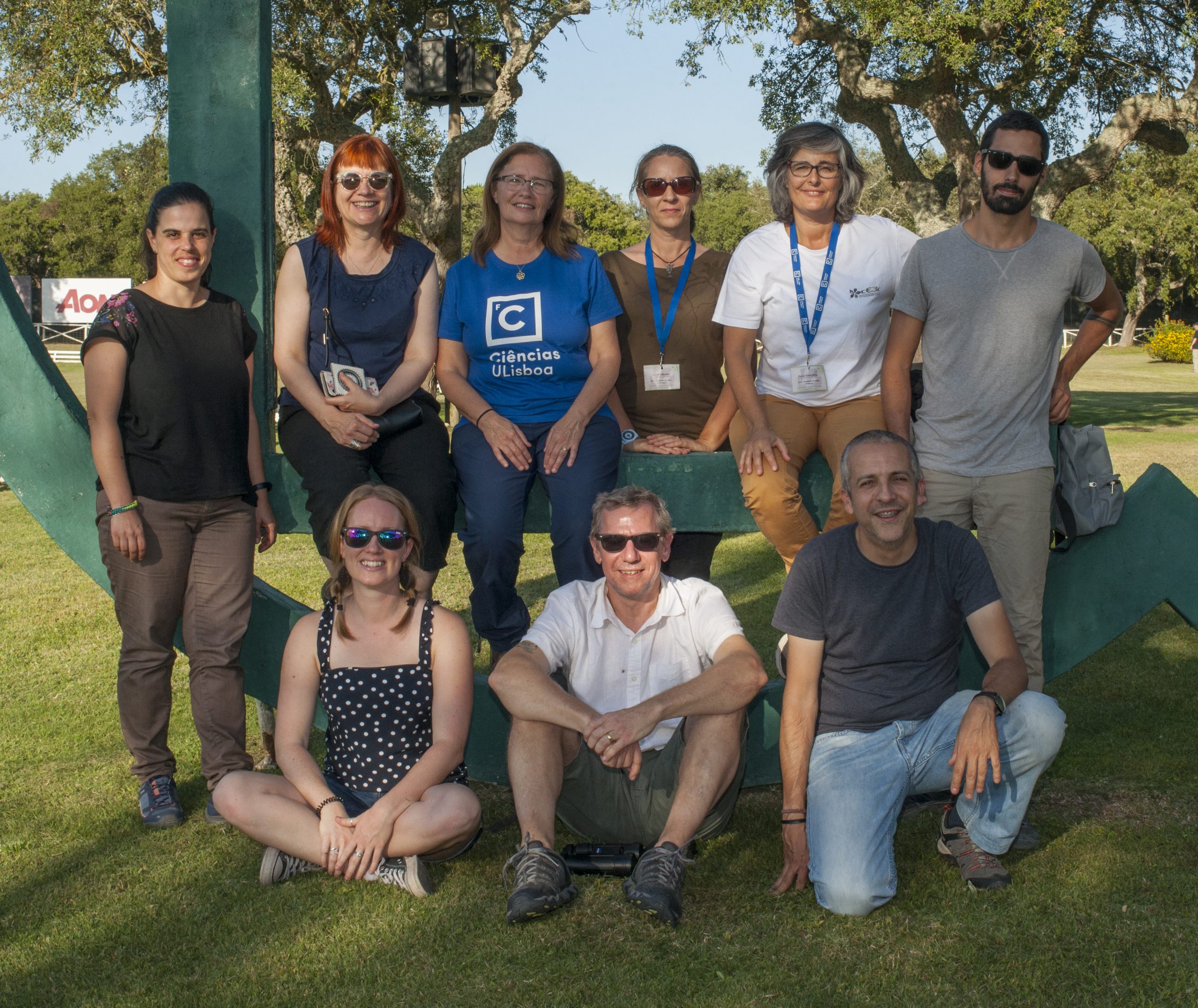
The organising committee for the the 2019 European Mustelid Colloquium in Lisbon
What will you miss most about working with VWT?
The wonderful staff team!
How has VWT changed in the time you’ve been with us?
In the time I’ve been at VWT, the Trust has begun working on a greater diversity of species (including adding European mink and wildcat to our principal species), with more partners and collaborators and over a greater geographical range. VWT has also almost doubled in size in terms of staffing during my time!
How do you see VWT in the wider world of wildlife conservation?
VWT is really unique in the scope and breadth of its work and it has been wonderful to be involved in such a variety of projects and species. It’s an exciting time for VWT’s carnivore work, with new projects beginning on wildcats and European mink, and I’m looking forward to watching how these projects and work evolve.
We will miss you, Lizzie…but best wishes for your new role in science communication with the British Small Animal Veterinary Association.





